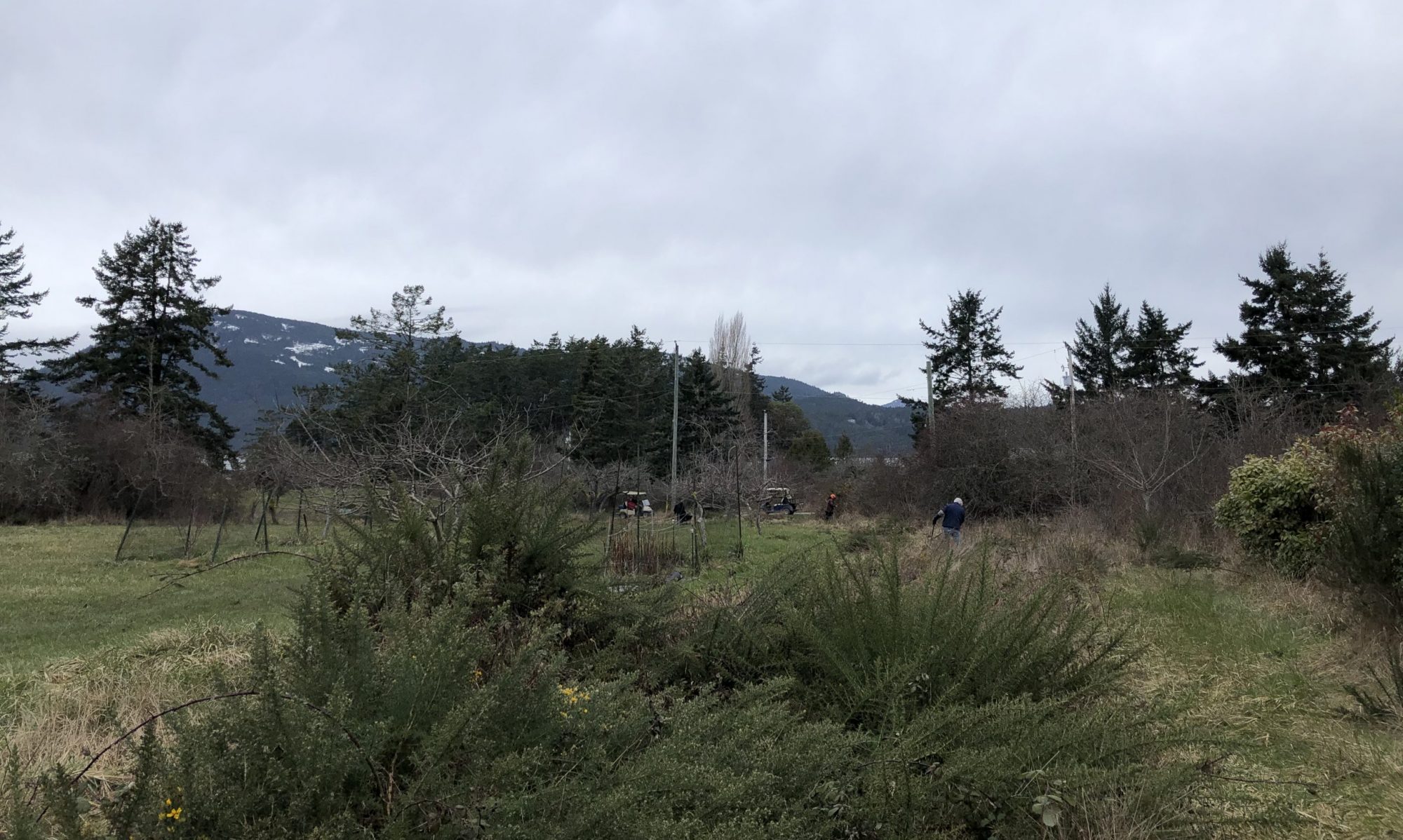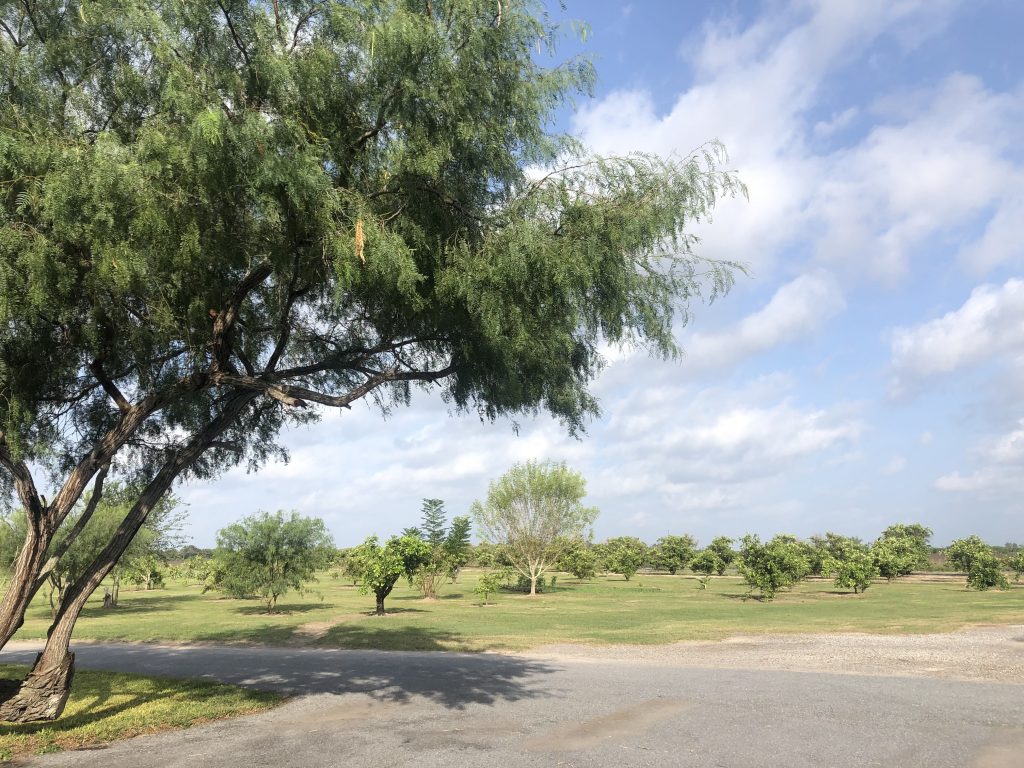For this studio project, I decided to frame my research through different aspects of agency that I find relevant to my design practice. This period of time has largely been spent in transport, pushing for personal deadlines, and in celebration of my new legal in Canada. It has been a time of reflection and meditation on my practice, intention, and direction moving forward. This project was the first in a long time that I tool myself outside of my current conditions and environments, and strove to incorporate the messier, less defined aspects of my practice, and what that looks like outside of BC.
Translation | Function | Process | Knowledge
Function
I have always had a preference of making things that I consider to be practical or functional. I make things I need, tools, or objects that might be useful to someone. Pots, spoons, bowls, brooms, furniture, wallets, not to mention edibles — salsa, pickles, jams, beer, cider, the list goes on. I make things that are meant to be used, shared, weathered. Things that I imbue with care, with precision, with intention. It is this aspect of my practice that I decided to work with arbutus wood for the first time on the lathe. I had a very special small amount of spalted arbutus from my family’s property. It is spalting in a completely unique way, similar to the crystallization of snowflakes, a rare breed. I’d been intimidated by it, but felt the time was here. This is my favourite kind of tree — arbutus — and I wanted to learn how to work with it thoughtfully and knowledgeably.
Of the three blanks I got, one was the most viable, and it was remarkable to behold. Not because of the shape or form, but the color patterns in the wood — the marbling and melting striations — were a thing to get lost in, like looking at the milky way on a cloudless night. This was not my doing, but the natural process of decomposition had started in the wood. Not enough to compromise the structural integrity, but just enough to evoke an aesthetic metamorphosis.
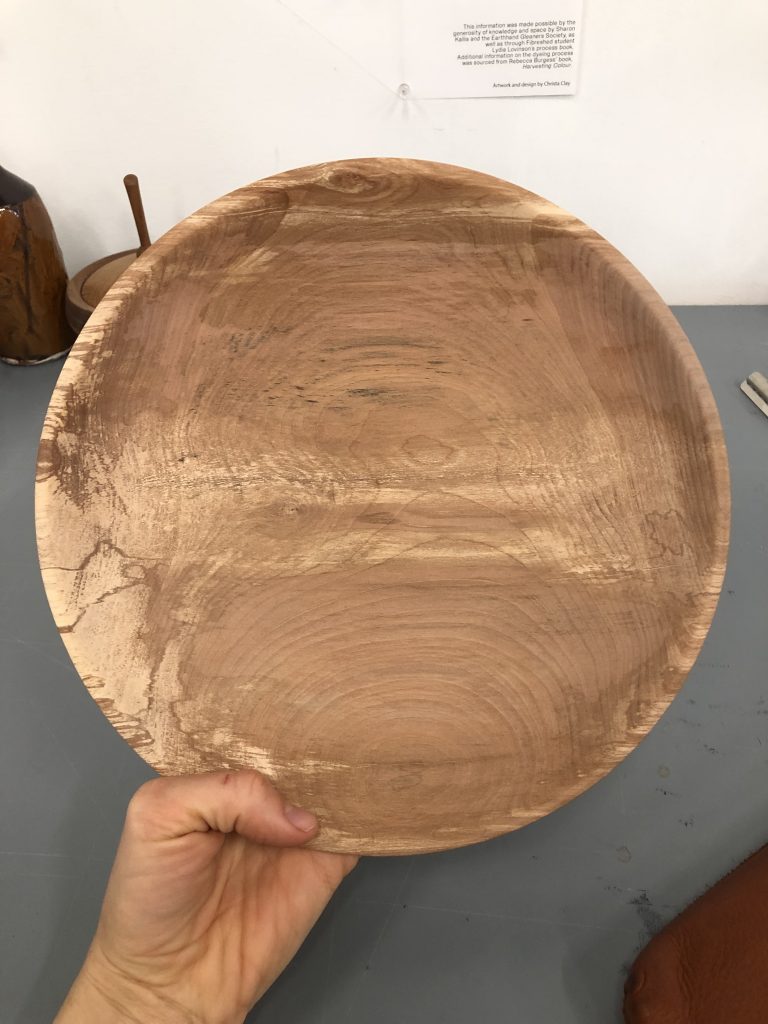
arbutus bowl inside – unoiled 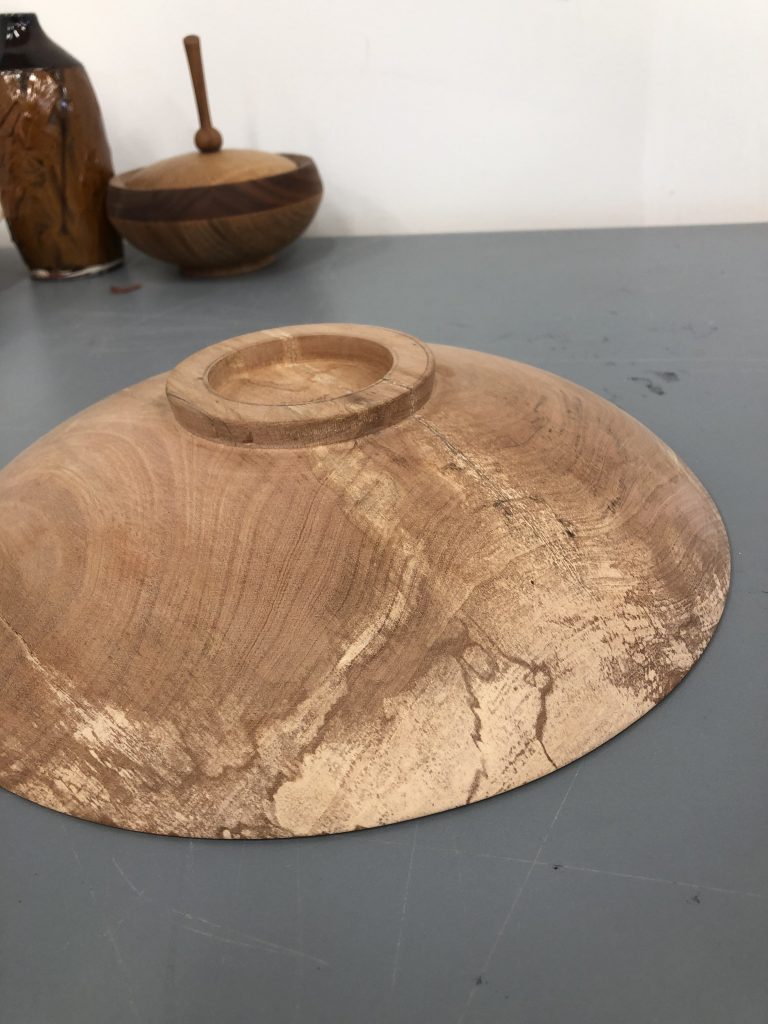
arbutus bowl outside – unoiled
I’ll keep a long story short but the bowl and a set of arbutus spoons carved by my partner made it to their best possible home in Texas to some dear friends. One of the most special connections I have been able to make in my woodworking practice is arbutus — native to the PNW, it grows in two little pockets of Texas. A dwarf variety, Arbutus xalapensis (aka Texas madrone), which I learned on this trip was also the favourite tree of those dear friends. This was a divine circumstance, where I didn’t need to explain much about the history of the wood, it’s environment, or my intention, it was already known. The process of the making, how and why those decisions were made, and offering it to someone else, allowed them the opportunity to treasure the gestures. To know how or why something came to be, how to care for it, and what it’s origin means, changes a persons relationship to that object. It is not a wooden bowl, it is a memory, a relationship, a member of the family.

Translation
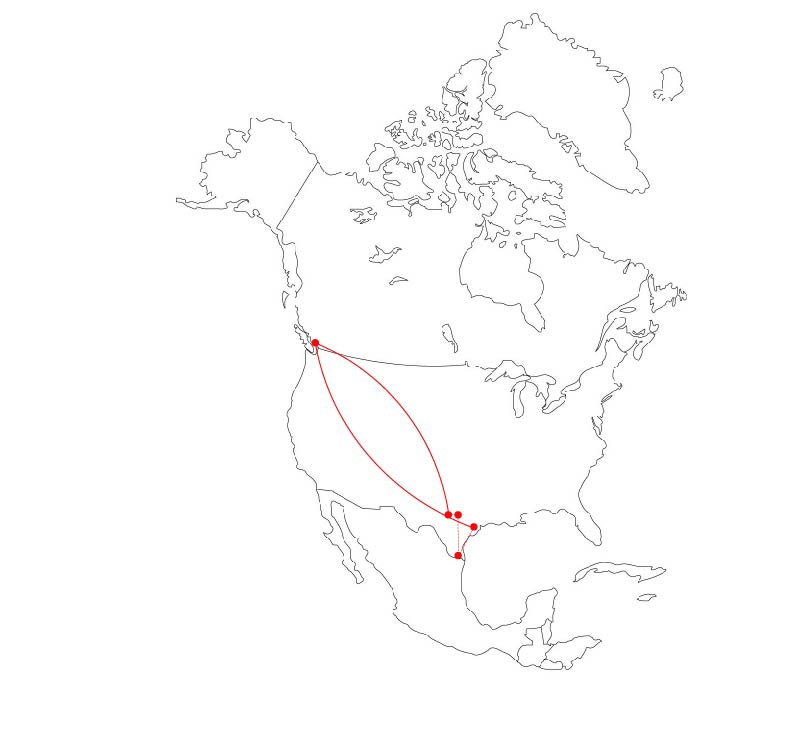
Nearly half of the four week stretch of this project for me was spend away in Texas. It had been nearly two years since I’d returned, and so I gave my time to my family. Uncertain of when I would return, I chose them over work. I saw my grandmother for three days, took a day trip across the Mexican border for lunch with her, met my 15 month old niece Joanna for the first time, watched my friends talk about love and joy and marriage at a wedding celebration, and feel an overwhelming sense of belonging and relief I didn’t know I was missing. I was needed there, even if just for a while. I feel rehydrated, refreshed, tired, and full.
While I was there, I was constantly catching people up on my last two years, my partner, puppy, job, grad school — and got a lot of practice talking to folks about ‘what kind of design I do.’ It cornered me into a space where I had to sideline academic linguistic gymnastics in the service of sounding accessible, digestible, translatable. I had to make sense to everyone, regardless of their experience in design or academia.
It got me thinking about the translation of meaning, intention, of practice. Sometimes all we can do as artist or makers is offer the made thing for someone to receive, to interpret. Anyone can take what they want out of it, intention is not a universal language. This is an aspect of my research I hope to incorporate into my practice and thesis writing. A practice mindful of translation, wherever the work or theory goes.
Knowledge
We are all a product of our surroundings, our mentors, friends, media, education, families, we learn from them and decide what to keep or what to leave behind. I had the opportunity to visit my grandfather’s old tool shed — inside houses farming equipment, and woodworking tools that are three generations old. I think it is one of the most beautiful thing about being an artist or designer, not to mention human, that we are not a phenomena, we are a product of our environments — chosen and given to us. Knowledge shared, discovered, embodied, or disembodied, it is inextricable from where we find ourselves now. I hope to always carry this with me in my practice, gratitude and graciousness for the mentors and inspirations along the way, without them I do not know where I would be.
My great grandfather, whom we lovingly referred to as PawPaw, was a man rich in material intelligence. Along with a farming opeation in Southern Texas, he was a carpenter and craftsman. I discovered on this trip that he also used to turn wood, and sought out his old tools. I found them. Six weathered, slightly corroded, Craftsman chisels and gauges. I carefully wrapped them and brought them back home, to restore and use. I only knew him for a few years, he died when I was very young, but I look forward to carrying on his craft through my design practice, bringing back those lessons that were lost to the wind, the ones no one else in my family caught, keeping it alive for a while longer after dormancy.
Process
I’ve been wanting to make a version of hempcrete with scotch broom for a while now, and finally found the right location and timing, back on Piers Island. This is where my research began with scotch broom last spring, and where I hope it will continue to evolve and grow.
The research myself and Chiara have done so far has been on scotch broom as material, in its raw form and as a source of cellulose for spinning — those explorations opened us up to the possibilities of using scotch broom as the fibre component of a bio-brick, a sustainable alternative to concrete for local building projects. We are still so motivated by the idea of a material we can use out completely for the betterment of the environment and community. I took this first proof of concept to the max, using broom from the island, processing it as before on its shelly beaches, and substituting store-bought lime for local oyster shells I harvested and crushed earlier this year. This material is 100% Piers Island. My long term goal would be to make a structure on the island, perhaps a small 10×10 structure (can get by without permits this way) once I get some larger scale testing done. Here is the first go, but certainly not the last.
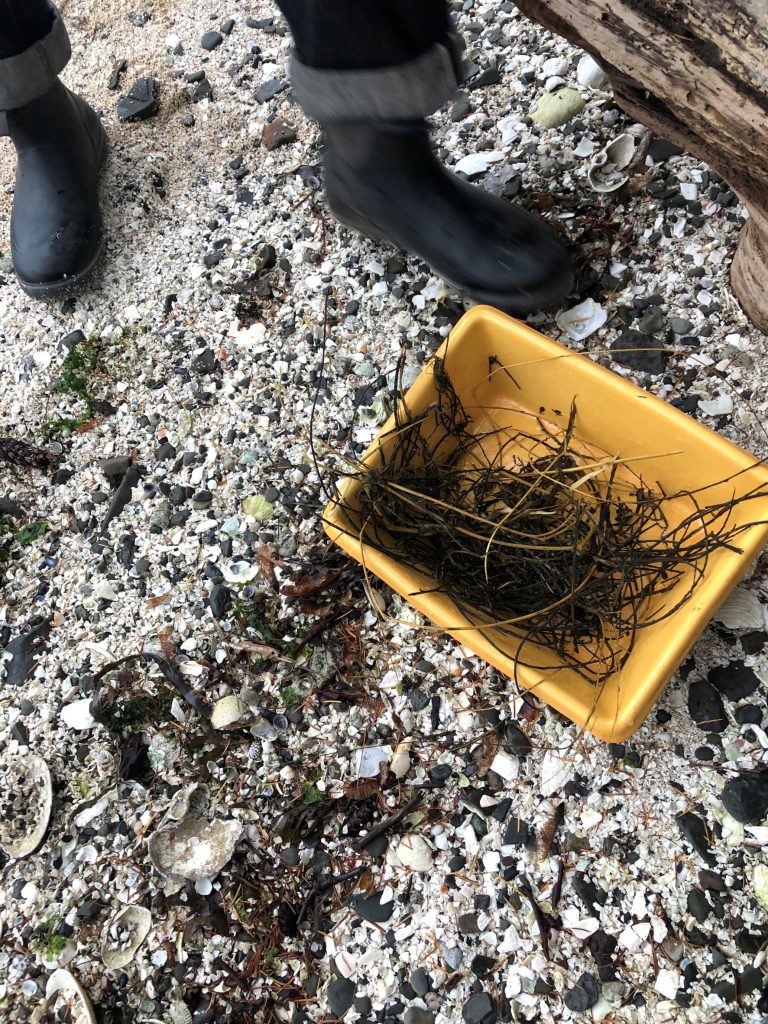
post stomp 
mixing in the ground oyster shell
